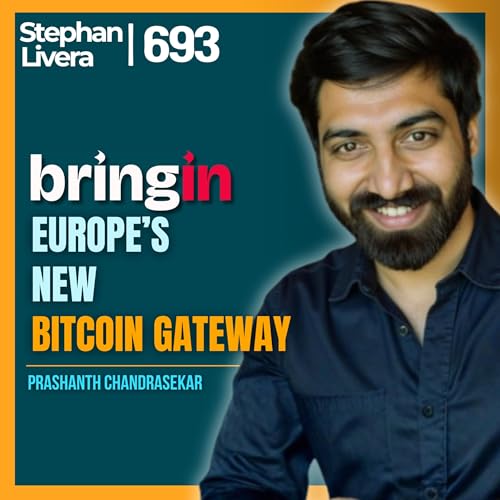In this conversation, Stephan Livera and Jesse Myers discuss the current state and future of Bitcoin treasury companies, focusing on Smarter Web Company's strategies and performance. They explore the implications of PIPE deals, the importance of a solid track record in delivering Bitcoin yield, and the regulatory environment's impact on investment strategies.
The discussion highlights successful examples like Metaplanet and the potential for Bitcoin treasury companies to accumulate a significant portion of Bitcoin in the coming years. They also address the challenges investors face, including understanding mNAV and justifying premiums in Bitcoin investments.
Jesse also introduces the P-Bid ratio as a new metric for evaluating these companies, emphasizing the need for a strong retail investor base and the significance of operational businesses in sustaining value. The discussion concludes with reflections on the future of Bitcoin treasury companies and their role in the broader financial landscape.
Takeaways:
🔸Smarter Web Company has over 2500 Bitcoin and a mNAV of about 1.6.
🔸The current Bitcoin yield for Smarter Web Company is 278%, significantly higher than market expectations.
🔸Many Bitcoin treasury companies have struggled to deliver consistent Bitcoin yield.
🔸PIPE deals can create headwinds for Bitcoin treasury companies due to misaligned investor interests.
🔸Successful Bitcoin treasury companies have a track record of delivering Bitcoin yield over time.
🔸Metaplanet is highlighted as a successful example of a Bitcoin treasury company.
🔸The regulatory environment in different countries affects the success of Bitcoin treasury companies.
🔸There is potential for Bitcoin treasury companies to accumulate a significant portion of Bitcoin in the future.
🔸Public companies have more capital market tools available than individual investors.
🔸Understanding mNAV is crucial for valuing Bitcoin treasury companies.
🔸Bitcoin yield is a key factor in assessing company performance.
🔸The P-Bid ratio helps unify mNAV and Bitcoin yield metrics.
🔸Retail investors play a vital role in the success of treasury companies.
🔸Many Bitcoin treasury companies struggle to deliver consistent yield.
🔸M&A activity is expected as companies trade below 1X mNAV.
🔸The fundamentals of Bitcoin treasury companies are real and promising.
🔸There is a significant opportunity for growth in this sector.
🔸The Bitcoin treasury industry is in its early stages of development.
🔸Investors should focus on well-run companies to maximize gains.
Timestamps:
(00:00) - Intro
(01:05) - What’s new at @smarterwebuk?
(03:07) - Evaluating the recent Bitcoin Treasury lull
(05:03) - Jesse's issues with PIPEs for Bitcoin TCs
(10:45) - What counts as a successful Bitcoin TC?
(15:36) - Regulatory environment supporting the rise of Bitcoin TCs
(19:19) - How real is the Bitcoin Treasury fad?; Building Capital markets on Bitcoin
(26:53) - Sponsors
(29:03) - Why choose BTCTC over spot Bitcoin?
(34:42) - BTC-denominated convertible notes
(41:10) - What justifies the mNAV premium of BTCTCs?; mNAV & BTC Yield
(46:36) - The P-BYD ratio is the P/E ratio for Bitcoin treasury companies
(52:10) - What are the challenges in delivering a high Bitcoin yield?
(56:48) - The role of retail investors in Bitcoin TCs
(1:00:02) - Is M&A the way forward for Bitcoin TCs with mNAV below 1?
(1:09:12) - How will TCs mature over time?
Links:
https://x.com/Croesus_BTC
https://x.com/smarterwebuk
https://x.com/Croesus_BTC/status/1945572138880041226
SWC analytics dashboard: https://investors.smarterwebcompany.co.uk/analytics/
Sponsor:
Stephan Livera links:
 1 h y 2 m
1 h y 2 m 57 m
57 m 33 m
33 m Oct 8 202554 m
Oct 8 202554 m 1 h y 14 m
1 h y 14 m 51 m
51 m 59 m
59 m 1 h y 2 m
1 h y 2 m
